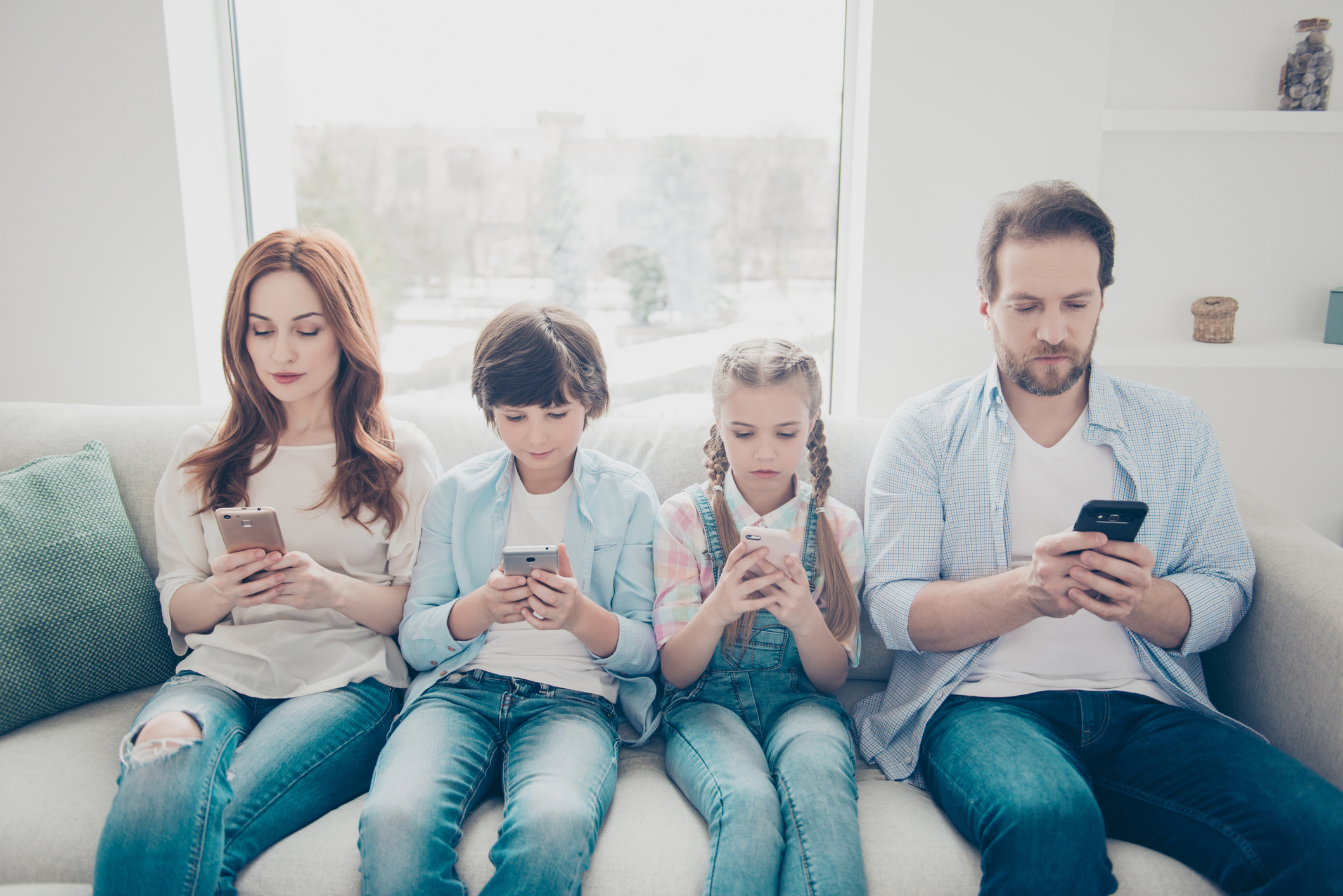Get Easy Health Digest™ in your inbox and don’t miss a thing when you subscribe today. Plus, get the free bonus report, Mother Nature’s Tips, Tricks and Remedies for Cholesterol, Blood Pressure & Blood Sugar as my way of saying welcome to the community!
How heavy screen time is hurting us and how to cut down

There’s no question we’ve all been spending a lot more time on our screens during the pandemic. In-person meetings have been replaced by Zoom calls, live conferences have gone virtual and kids are learning online instead of in classrooms. And we’ve been filling the many idle hours stuck at home by binge-watching programs on Netflix, Hulu and other streaming services.
Plenty of studies have been done on the ill effects of sitting in front of the TV for long periods of time. Adults watch about 34 hours of TV per week, which averages out to just under 5 hours per day. This is bad news considering that studies associate watching 2 or more hours of TV per day with bad health habits, a number of chronic diseases, cancer-related mortality and overall early death.
There’s also a definite link between TV and obesity. Research shows adults watching TV for between 2.5 and 4 hours a day are twice as likely to be overweight, and those watching TV for more than 4 hours a day were four times more likely to be overweight.
As screen-using habits shift from TV to computers, smartphones and tablets, researchers are starting to take a closer look at what that change means for our health habits. So far, they’re not finding anything good…
More screen time = poor health
In a study recently published in the journal BMC Public Health, heavy screen users — defined as those whose screen time across all devices totaled 17.5 hours per day — reported the least healthy dietary patterns and the poorest health-related characteristics.
Interestingly, unique dietary habits emerged when separating out the type of screen. Heavy users of TV and smartphones showed the worst dietary habits compared to heavy users of TV-connected devices, laptops and tablets. Also, heavy users of smartphones reported the lowest quality of sleep.
The researchers also examined binge-watching; an activity defined as watching multiple episodes of a TV program in a single sitting. They found binge-watching was significantly connected with perceived stress and unhealthy dietary patterns, including frequent fast-food consumption and eating family meals in front of a television.
The study surveyed more than 900 U.S. adult participants 18 and older who owned a television and at least one other device with a screen. Tests were conducted to examine differences in dietary habits and health-related characteristics between screen time categories and duration of use.
Stepping away from the screens
Study co-author Chris Wharton, assistant dean of innovation and strategic initiatives at Arizona State University’s College of Health Solutions, notes these insights into the connections between negative health impacts and device types can help inform future research into screen time interventions.
“When we look at interventions to help people eat more healthfully as it relates to screen time maybe we can’t just focus on television. The smartphone might be another really important factor in that,” Wharton says. “Or if we want to improve physical activity, maybe we don’t need to think about smartphones, but we do need to think about TVs.”
In another study, currently pending publication, Wharton asked 10 participants to stop using screens of any kind from the time they got home from work to the time they went to sleep for two straight weeks. So far, the data suggest this change has been extremely positive.
“Initial results suggest that people have to figure out what to do with this time, so they’re doing things like spending more face-to-face with family and friends, cooking and preparing food, being physically active and engaging in hobbies,” he says. “Things that are fulfilling in physically healthful ways and mentally healthful ways that you don’t get when the majority of your day is engaged with screens.”
Right now, a lot of us are working from home or going to school online, so some screen time is inevitable. But there are ways you can cut back on your use of screens and improve your health in the process…
Move around. If you find yourself getting sucked into a Netflix binge or a mindless smartphone scroll, get up and move your body. If you can, take a 30-minute walk around the neighborhood. If you have to stay indoors, try doing some stretches for at least a few minutes before going back to your screen watching. Whatever way you choose to do it, moving your body a good way to interrupt the screen-staring pattern — and you’ll be getting some healthy exercise in the process.
Switch tasks. Turn off the TV or put down your phone, tablet or computer and do something non-screen-related. You could cook a meal or clean the house, or engage in a hobby like playing an instrument, drawing or painting or making crafts. Even reading a physical book or magazine can be a good way to give yourself a break from screen gazing.
Get some face-to-face time. This isn’t easy given the social distancing restrictions we’re all under, but it’s still possible. Set aside some time to sit and talk with your family without the distraction of screens. Or you can schedule an in-person meetup with a friend or two. If you do meet people outside the home, keep it safe — make sure you all wear masks and keep at least 6 feet of distance between you
Sources:
Netflix and Binge: ASU study finds association between screen time use, diet and other health factors — Arizona State University
From TVs to tablets: the relation between device-specific screen time and health-related behaviors and characteristics — BMC Public Health












